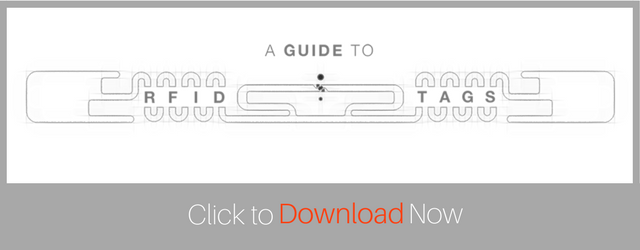The Importance of Selecting the Right Attachment Method for RFID Tags
Introduction
Just about any type of inventory or asset – regardless of shape, material type, or use – can be tracked using RFID tags. The key to tracking different types of items is choosing the right RFID equipment, especially the right RFID tags.
Equally as important as selecting the correct RFID tag, selecting the right attachment method can make the difference between a successful application and a failed application. If the wrong attachment method is chosen, the tag could fall off and skew the application’s efficiency.
Several methods are available for securing an RFID tag to an asset as shown in the list below.
- General Purpose Adhesive
- Straps
- Hanging
- Sewing
- Welding
- Rivets
- Screws or Bolts
- Cable Ties
- Shrink Wrap
- Embedding - click here to see the step-by-step infographic!
- Epoxy
- Extra Strength Adhesive
Consider the following aspects in order to narrow down the attachment method options.
Tag Attachment Options - Some tags will only have a few feasible attachment methods, while others can use almost any attachment method available. If a given tag meets all other application requirements (i.e. read range, memory, size, etc.), check the recommended attachment methods for that specific tag on the tag’s data sheet or by asking the manufacturer.
Surface Material – The asset’s surface material is a key component in choosing an attachment method because some attachment methods will work better on certain types of materials. For example, adhesives and welding are two examples of attachment methods better suited for metal assets than textiles or linens. The asset’s surface material, whether that be metal, wood, plastic, or cotton, should be taken into consideration in order to narrow down the available attachment options.
Of note, when using adhesive and before attaching a tag to an item, always clean the intended tagging area so that the tag has the best chance of staying securely attached for the application’s lifespan.
Exposure – If the tag will be exposed to any harsh environmental concerns such as UV light, moisture, vibration, pressure, chemicals, or impact, its attachment method will be exposed as well. If one of these concerns applies to your application, it is best to choose an attachment method that has been tested and proven to withstand such exposure.
Temperature – Extreme temperatures are important to consider when choosing a tag and attachment method. Not only could the tag be damaged and become unreadable, but the actual method of attachment could melt off the item (e.g. adhesive) or become brittle and break (e.g. cable tie) causing the tag to fall off the item. Be sure that the attachment method has been tested in application temperature conditions before making a final selection.
In addition to the environment, temperature of the item itself should also be assessed when choosing the attachment method. If the environment is a normal, regulated temperature, but the actual item can reach much higher or lower temperatures, take the more extreme temperature into consideration when choosing how to attach the RFID tag.
Application Lifespan –Certain attachment methods can slowly degrade over time depending on their chemical makeup. In applications that have assets with a long lifespan, such as returnable transit assets (e.g. reusable pallets), the tag may need to stay on the asset for years. Evaluate the tag and attachment method to make sure that they are compatible with the intended lifespan of the asset in the application.
Conclusion
If you would like to learn more about all things RFID, check out our website, our YouTube channel, comment below, or contact us.
To read more about RFID tags, check out the links below!

